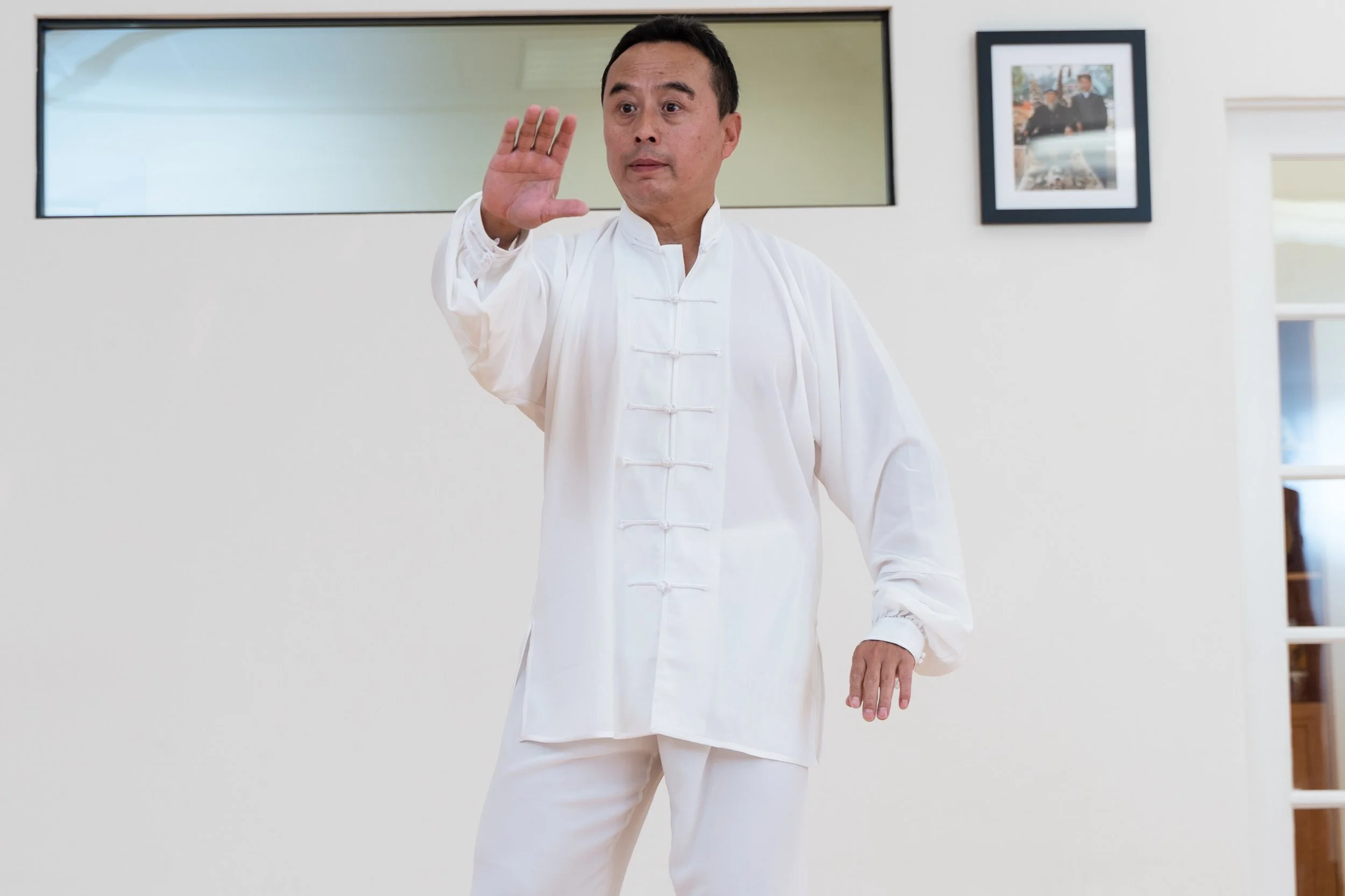Our Martial Art Styles
At Master Yun’s Studio we specialize in many different forms of martial arts. These forms are broken down into three categories: Internal, External, and Weapons. We encourage our students to look through each of the categories to understand the differences and complementary aspects of each style.
Internal Styles
Internal styles are a stark contrast to their external counterparts. Training in these forms requires slow and precise movements. It is in these moments where students learn to control their minds and body to gain insight into the minute subtitles. The goal is to involve the entire body in every movement, to stay relaxed and maintain perfect balance.
Wu Style Tai Chi Quan | 武式太极拳
Tai Chi Quan is a traditional internal Chinese martial art. It is designed to develop “internal” power. Its movements are practiced very slowly and smoothly. In this way, one can develop connections through one’s entire body. This training is very good for health, as has been shown in a recent study from Harvard University.
Wu Style Tai Chi Quan is a style of Tai Chi that is very difficult to find outside of Mainland China. For many years, the style was only taught to members of the Wu family. It differs from other Tai Chi styles in that its movements tend to be smaller, and more focused on moving from one’s center (core). Generating motion in this way uses all parts of the body. This is why high-level Tai Chi can be such an effective martial art. More importantly, it is why Tai Chi is such a healthy exercise.
Shang Style Xing Yi Quan | 尚派形意拳
Xing Yi Quan (形意拳) translates to Form-Intention Boxing. While Xing Yi Quan is not common in western countries it is very popular in China. It is one of the first Martial Arts to be promoted for its health benefits as well as its martial effectiveness. Xing Yi Quan naturally complements Traditional Tai Chi due to the fact that they are both designed to make the practitioner healthy by moving internal power.
external Styles
External styles are the most recognizable Chinese martial arts in the world. Their movements are often fast and explosive in nature. Due to this, there is a focus on physical strength and agility in all of the movements. Training for these styles focuses on muscular power, speed, and applications.
Seven Star Praying Mantis Kung Fu | 七星螳螂拳
There are quite a few legends surrounding the creation of the Praying Mantis Style, however, during the Song Dynasty (960-1279) a consensus has been established that the Mantis Fist was first created by Master Wang Lang(王郎) at the request of Abbot Fu Ju (福居, 1203-1275) when he brought together eighteen masters to improve the martial arts of Shaolin. After the Song Dynasty fell much of the documentation was lost to the ages until a manuscript depicting the martial art styles was found in 1794. It is at this point where Master Yun can trace the history of his martial arts style that he now teaches in his studio.
Chuo Jiao & Fanzi Quan | 戳腳和翻子拳
Chou Jiao and Fanzi Quan are uniquely connected. They are essentially opposite sides of the same coin when it comes to training practices. Each form focuses on the same movements but from completely opposite directions. Chuo Jiao utilizes a combination of jumps, quick kicks, and fast fists throughout its forms to generate power. A unique characteristic of this style is that the practitioner uses their feet and hand strikes in unison to find openings in the opponent’s defense. Fanzi Quan is much more linear and focuses on generating a flurry of quick fist attacks which are accented by specifically timed kicks.
Shaolin Mantis kung fu | 少林螳螂拳
Shaolin Mantis Kung Fu is a very practical fighting style. It contains few showy or extraneous movements. It emphasizes powerful direct attacks, using all parts of the body - head, shoulders, knees and elbows, along with punches and kicks.
Weapons Styles
Qing Ping Jian (Straight Sword) | 青萍剑
Qing Ping Sword (青萍剑)began in Northern Song Dynasty (960 – 1279). The martial art concept was created in the Long Mian Mountains of An Hui Province (安徽龙眠). Long Mian's literal translation is “where the dragon sleeps”. Based on historical records, Qing Ping is an evolution of Chung Yang Sword. It was the tradition to pass on the knowledge of these martial art forms through masters. Since the creation of Qing Ping, there have been over 17 generations of masters and students. Qing Ping was viewed by ancient practitioners as a jewel-like treasure, and as a result, is one of the most famous and deep-rooted ancient sword forms in China. It is taught through deep contemplation and teaches the disciples through meaningful poems.











